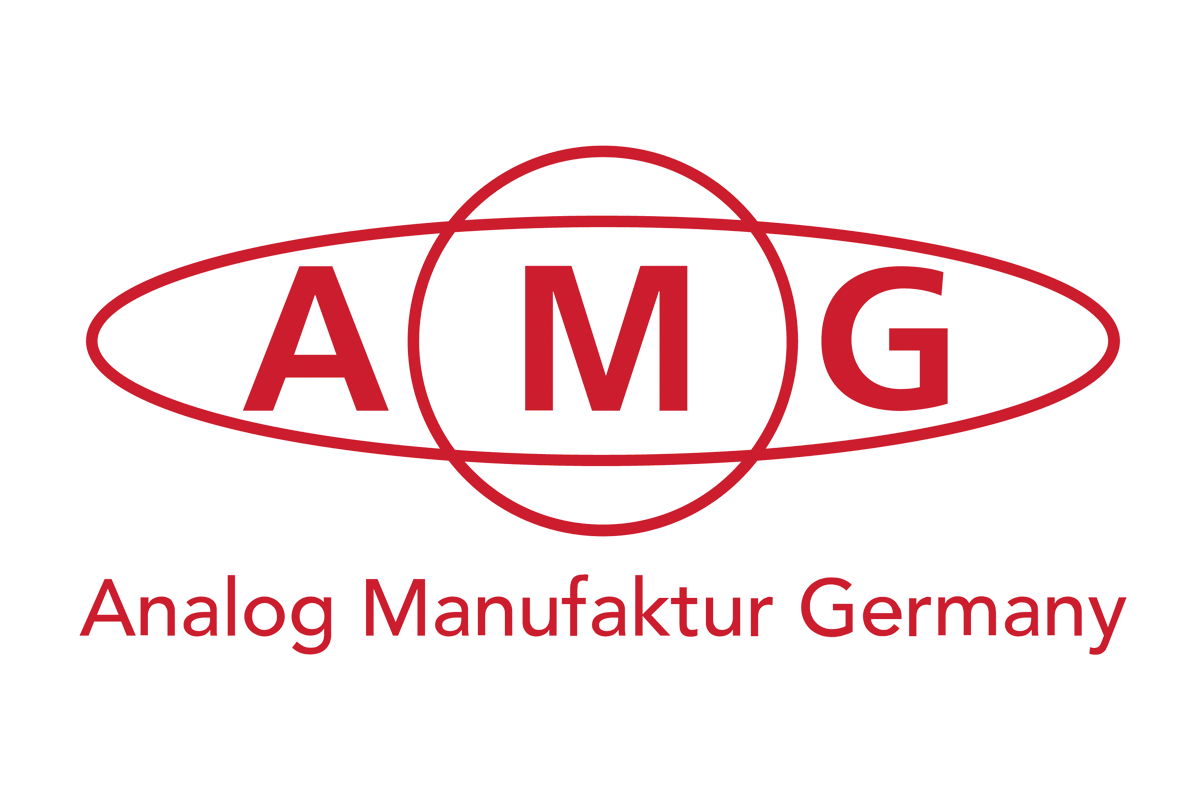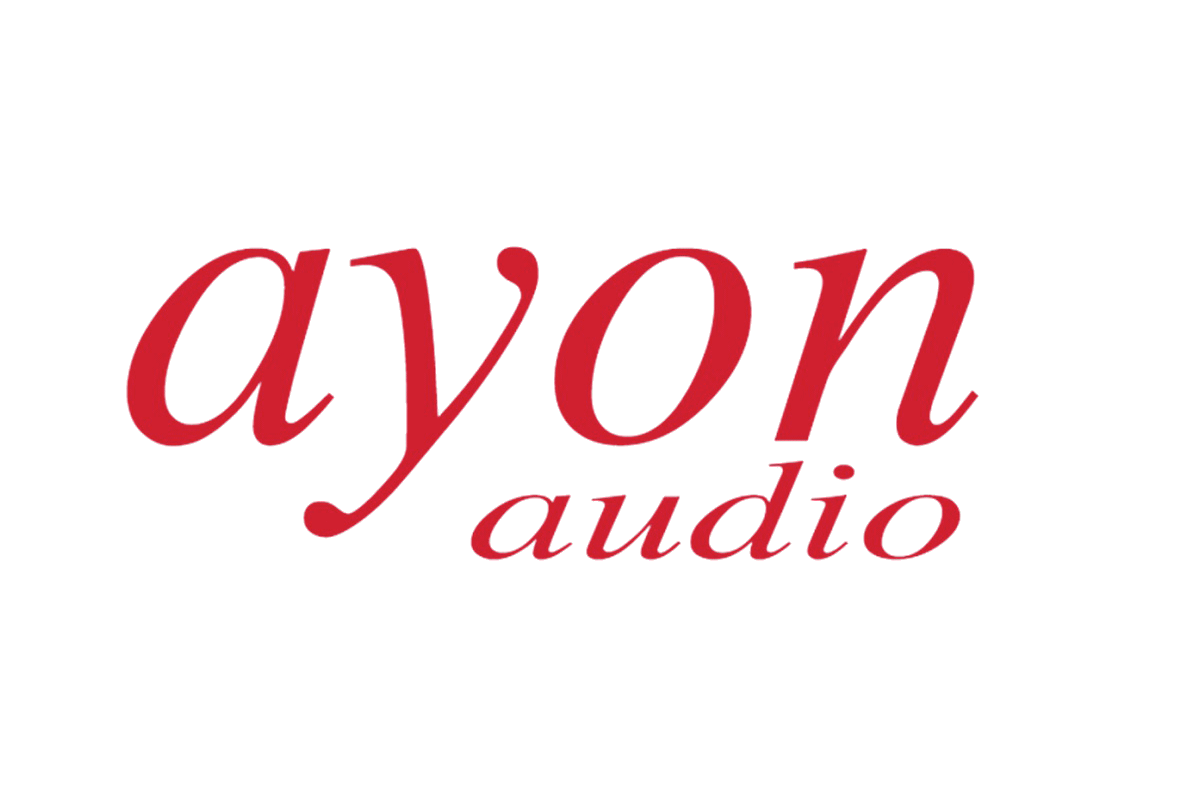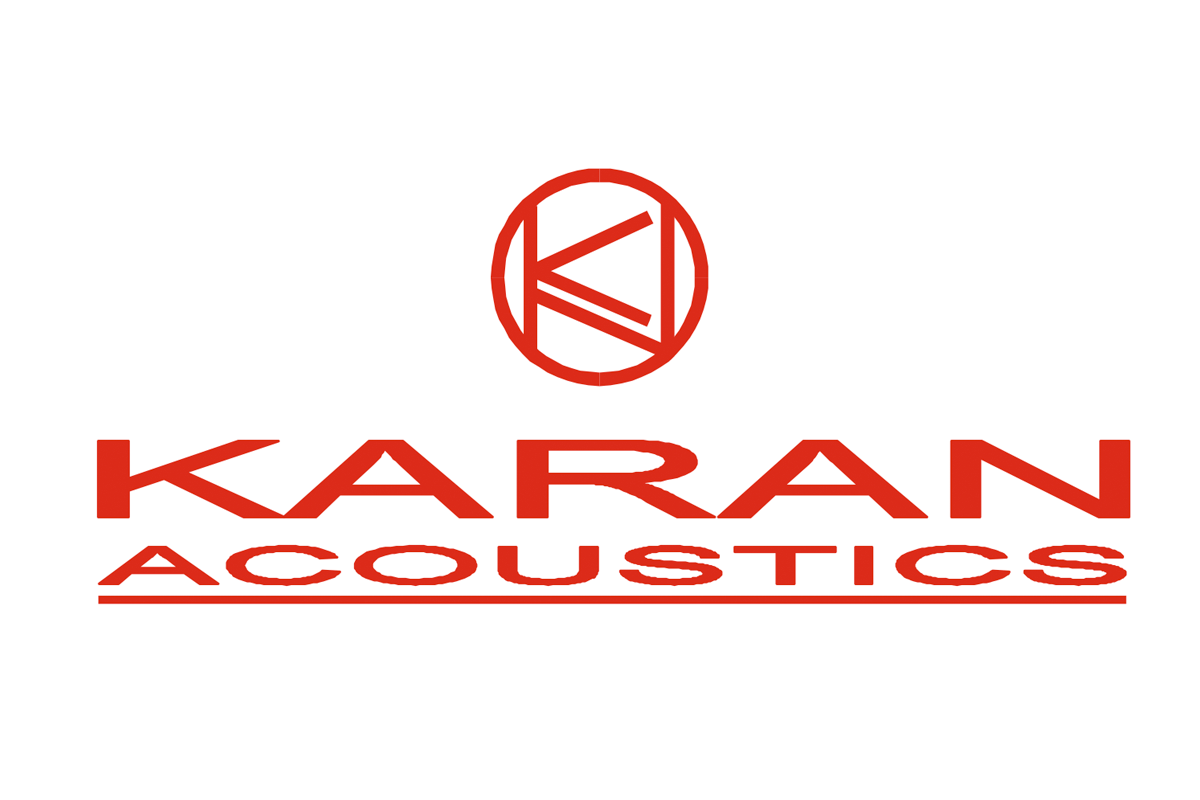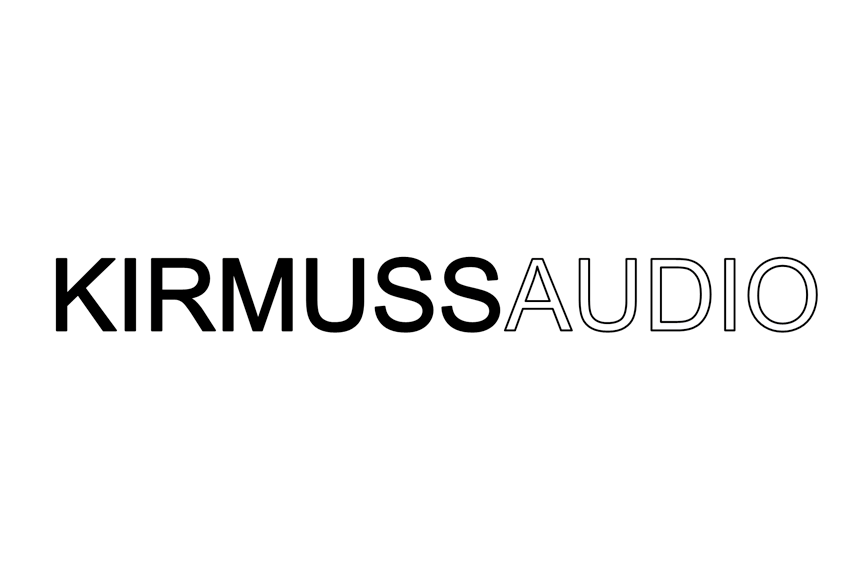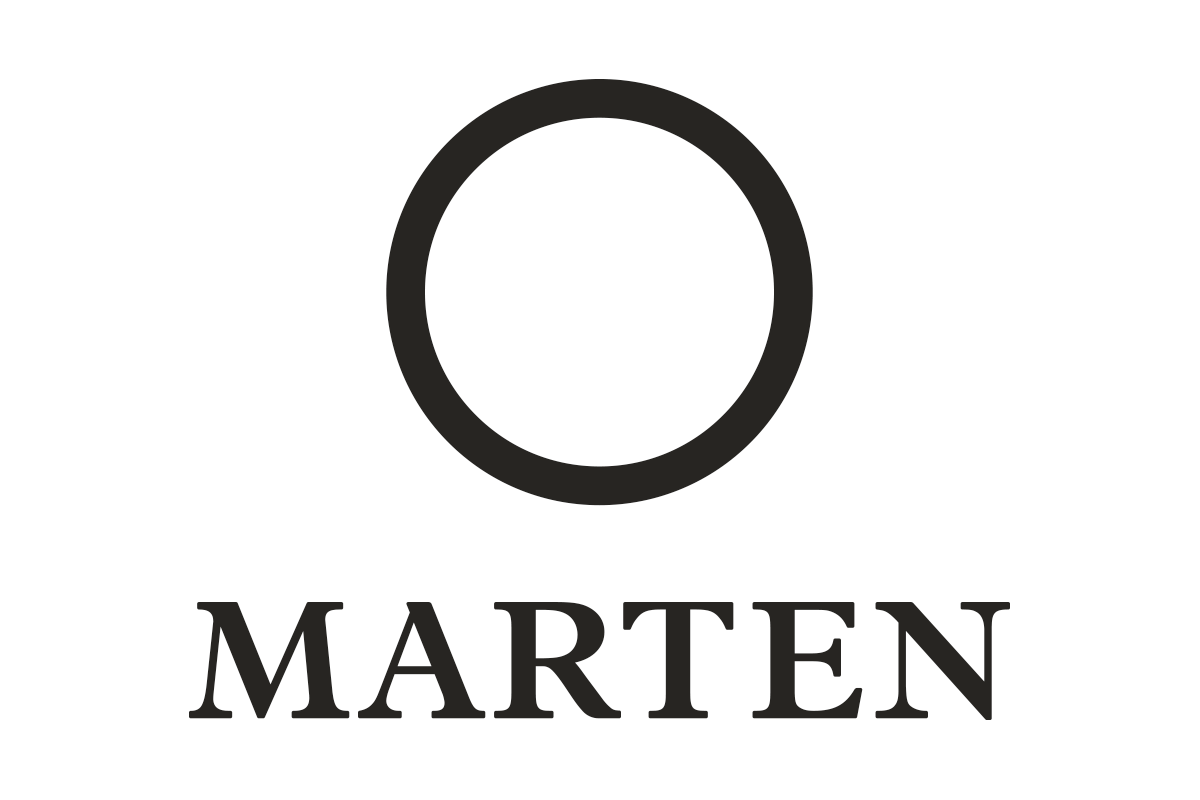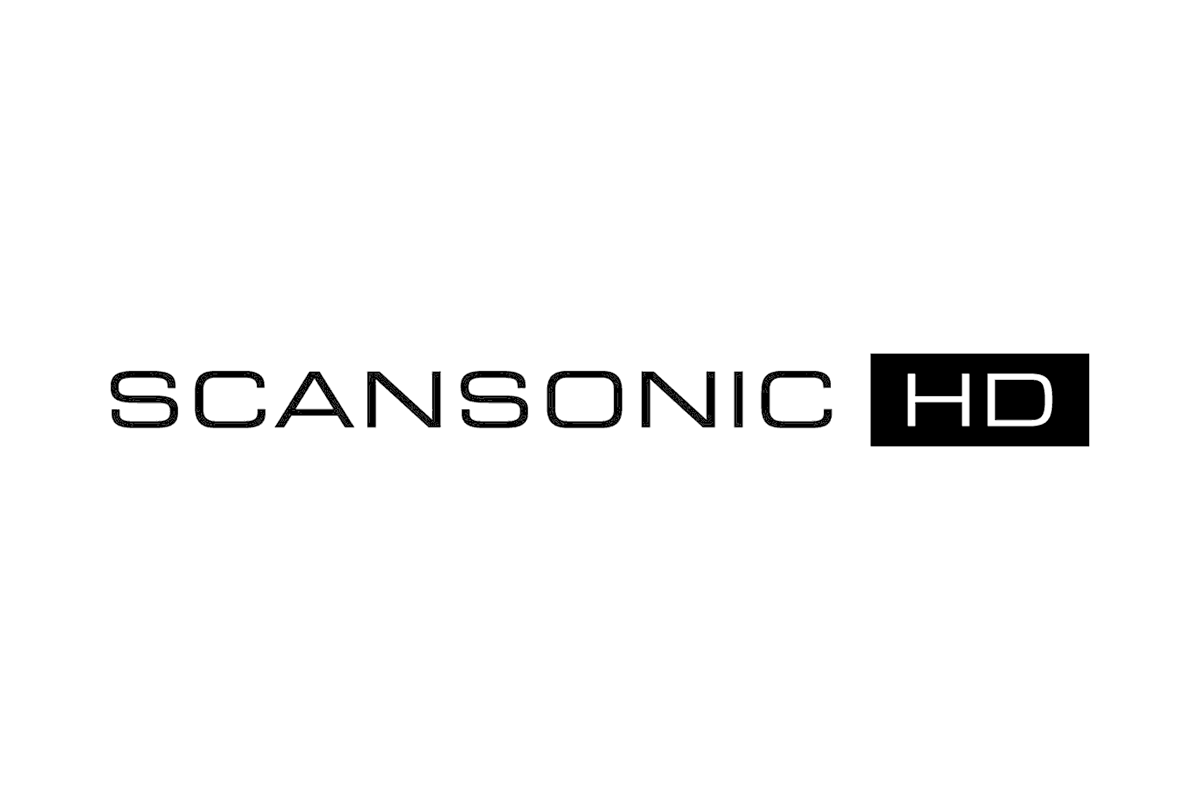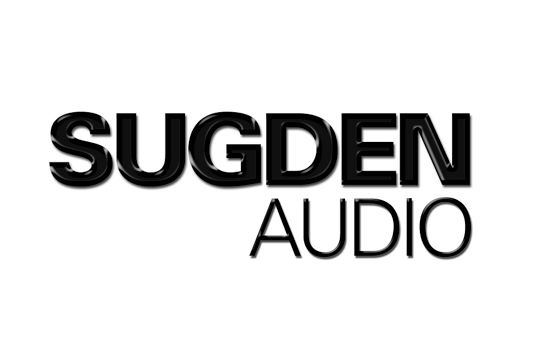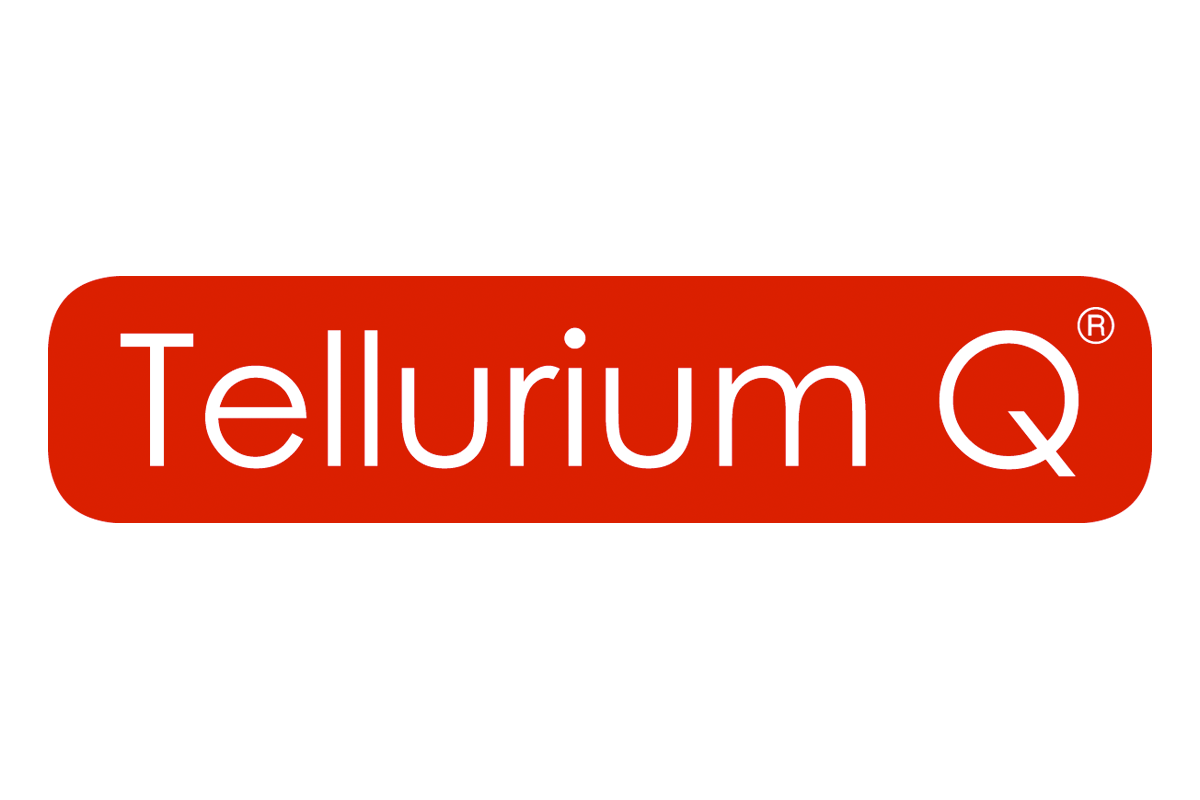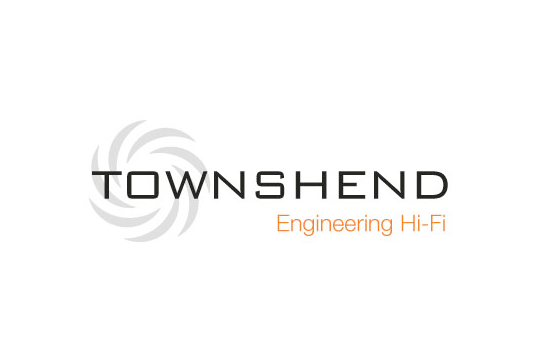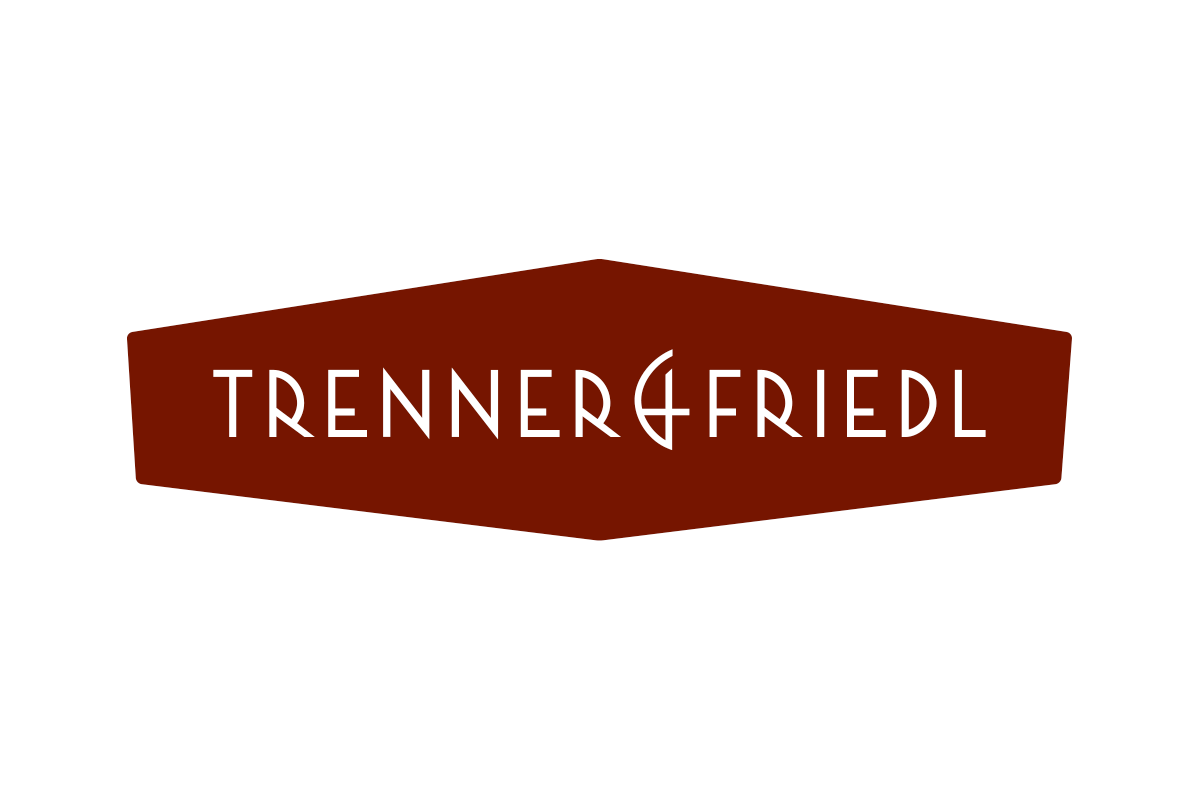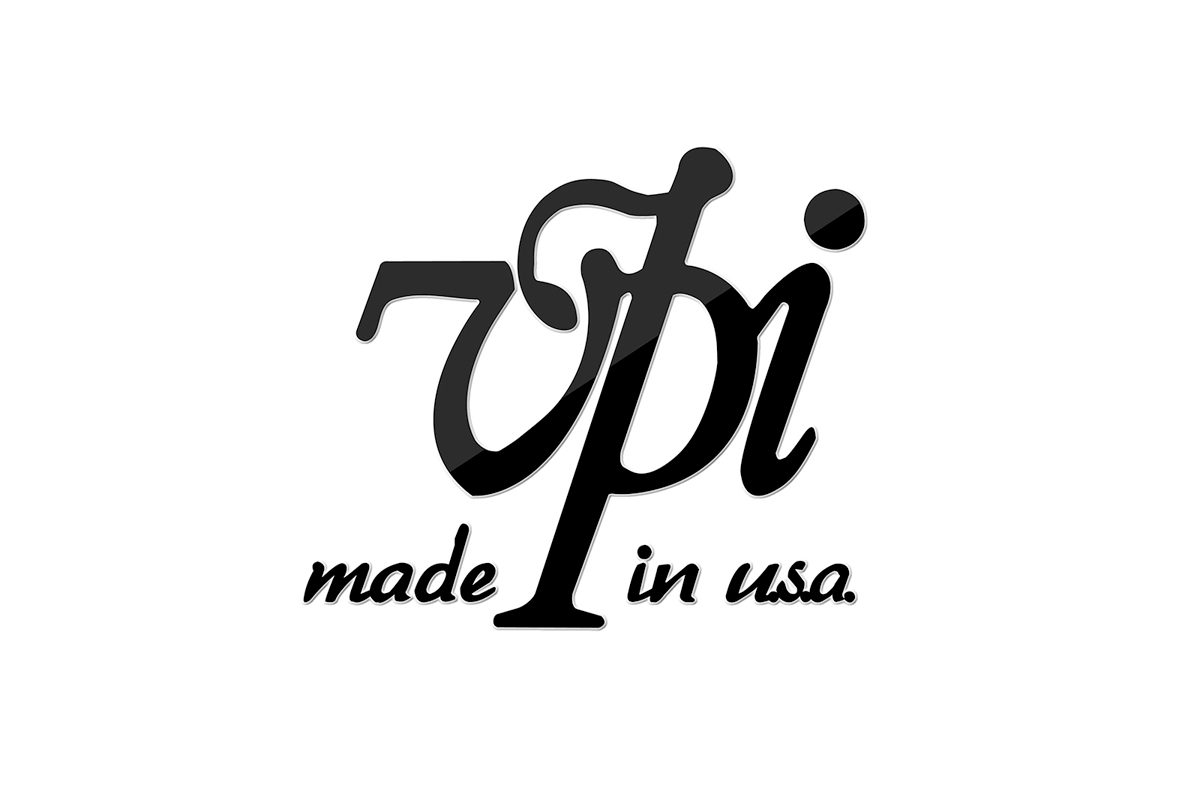Audio Brands
Considering new audio equipment is a very personal choice. I’m happy to share my experience with you to help you achieve your goal.
Contact Terry
Finest high-end audio jewellery, hand made Amplifiers, CD players & Transports - from Germany
-
Accustic Arts offers a comprehensive range of high-end products. A full range of electronics and accessories, all are available from one source, while the range is constantly being perfected. Accustic Arts products captivate through their natural sound reproduction and high output potential. The timeless, perfectly-shaped design is easy to integrate in every living environment. These fine music components are the result of thorough research and development work, use of best quality elements and the most careful handmade production at the facilities in Germany. The ultimate musical enjoyment is expressed through clarity, dynamics and depth of detail within the natural acoustic pattern.
"Reliable. Stable. Excellent. Impressive to hear; gorgeous to look at. Summing up: Accustic Arts is producing dream machines for music lovers…with a hearty dose of Audio seductiveness, for sure. If you're in the market for a truly fine set of high-end audio electronics in this price range, then do yourself a favour: check out Accustic Arts.”
David W. Robinson - Positive Feedback Mag.
"I have concluded that the Accustic Arts Tube Preamp II Mk 2 and Mono II amplifiers definitely are on my list for one of my Brutus Awards at the end of the year. They therefore definitely rate a "Ye Olde Editor's ‘Very Highly Recommended!’"
David W. Robinson - Positive Feedback Mag.
We use experience, derived from work in recording studios and the use of P.A. systems at other recording venues when developing new ACCUSTIC ARTS® products. “Absolute Sound Fidelity Through Reproduction” is both the name and the goal at the same time. ACCUSTIC ARTS® stands for ACCUrate acouSTIC ARTS, which means “the correct art of sound”. To meet this demand, only precise and high-grade components as well as latest technologies and construction principles are being used.
High end from ACCUSTIC ARTS® is expected to sound natural and detailed, it must not sugarcoat music, but has to allow emotion to shine through. Warmth is a desirable result in the naturtal sound pattern, but won’t be used as artificial showmanship.
Multi Award Winning, hybrid designed DACs, CDP, Phonos & Amps from the USA (they punch well above their price point).
-
Visit Aesthetix
A beautiful range of high-end Valve Amplifiers & DACs from South Korea
-
In 1916, Western Electric engineer G.W. Elmen, seeking a material that could be magnetized more easily, developed alloys of iron and nickel that came to be called permalloy. Later, permalloy became important for music reproducing systems. The recently introduced and now famous ‘amorphous cores’ are also based on nickel.
The name Allnic is derived from All Nickel core transformers. All Allnic’s signal transformers are made with nickel alloy cores such as PC or PB permalloy.
Allnic has been manufacturing high-end audio since 1990 and believes that as a coupling device for amplifying stages, transformers are much better than capacitors. Permalloy transformers are well worth their high cost and difficulty of manufacture, because they transfer over 90% of signal and retain dynamics and fidelity, compared with capacitors and their less than 5% transfer efficiency.
Also, transformer output pre-amplifiers are much safer than capacitor output pre-amplifiers when coupled with solid state amplifiers, even safer than direct coupled solid stage pre-amplifiers, because transformers block any surging voltages to the next stage, surges that can severely damage power amplifiers.
Multi-Award winning Turntables from the best of Germany design and quality.
-
Werner Röschlau, inventiveness, together with the hitherto very successful activity as a manufacturer of supplies for the upscale turntable industry, led to the development of his first own tonearm system, the 9W1 with its unique tonearm bearing principle.
The overall excellent reactions and reviews from the analog community then set the starting point for founding AMG in 2011.Other tonearms, such as the 9W2 and the 12J2 – completed by the 9WT and the 12JT – followed and were also able to convince the experts with their high precision and their outstanding tonal properties.
These properties, together with the principle always advocated by the founder that only products of the highest quality can convince customers in the long term, then laid the foundations on which the development of the turntables Giro, Viella and the resulting Viella Forte could be built.
This principle was also continuously developed by Julian Lorenzi, who grew into the company from 2011 as the son and partner of the founder.
Since 2013 he has been managing the company and his employees alone with his extensive knowledge and innovative strength.His father’s principle is still the secure foundation on which the international recognition, the innovative creativity and the future viability of this extraordinary company rest.
Multi award winning, State-of-Art Music Servers * Streamers - proudly designed and made in New Zealand.
-
Exceptional Musicality with Exceptional Transparency for Ultimate Sound Quality
Antipodes voted in the "TOP 4" Music Servers: _"Who’d have thought that, of all places, New Zealand would be home to what looks like some of the most advanced digital streaming we have at our disposal at this time?"_ Srajan Ebaen – 6MOONS
OUR PURPOSE:
Computer audio allows easy access to a world of recorded music, but early-on the sound was unnatural and so failed to express the music. Antipodes Audio was founded in 2009 to solve this problem, by creating musically-expressive music server/streamers for great audio systems.
We are the mavericks of digital audio, doing things differently and challenging mantras, for the love of music. Driven by revealing the subtleties that captivate us, we design music servers that allow music to flow naturally, organically, and with ease, so that we are immersed in music's powerful messages
At the end of 2019, after 3yrs of research, the revolutionary OLADRA Project delivered on the initial promise The first commercially-viable prototypes offered sound quality that was substantially ahead of anything we had heard before from a music server. The biggest and most obvious gains were in sheer clarity. There appeared to be no noise floor at all, together with excellent detail resolution and dynamics. Importantly, timbre and musical expression were outstanding.
Statement, class leading Audio Racks - from Spain
-
ARTESANIA are the rack of choice of Srajan Ebaen of 6MOONS
Artesania Audio was founded over 20 years ago by José Luis Lafarga, Acoustic Engineer and Audiophile in Barbastro, Aragon (Spain). Our company's main objective is to improve the perception of sound and listening thanks to the rack where the equipment is installed. Artesanía Audio, is devoted to the effective treatment of resonances of a vibrational origin using a technology called "Acoustic Anti-Resona
Artesania-audio with its unique Acoustic Engineering Board is committed to the effective treatment of resonance from vibrations since 1993. Jose Luis Lafarga and his team develop the Acoustic Anti-resonance treatment technology into the design and handmade furniture production for audio and audio/video components achieving outstanding linearity and neutrality in sound production.
REVIEWERS QUOTE: "Artesania Audio is still one of our favourite components. We can pretty much can say that without this rack we wouldn't have been able to evaluate properly our studio line and Absolute Sounds line of products. We hardly recommend that those of you who are on the upgrade path and have spent good money on super high end products to harmonise your system with the purchase of this rack.Please note that now there are also available different sizes of mass dampers, which act as dampers and RF shields to match your components precisely."</em>
Reasonably priced, high quality CDP, DACs, Streamers, Phonos & Amps, for budget-conscious audiophiles from France.
-
The reward for our efforts: musicality, fluidity, richness of timbre and sound detail, an extraordinarily realistic liveliness for a faithful reproduction of your favourite music.
THE 200 LINE
Do you want to obtain a more realistic and precise listening? All the devices in the 200 range offer you this possibility! Discover larger, more spacious musical universes. The 200 range offers you a unique musicality for sets suitable for all types of loudspeakers.
THE 300 LINE
Do you want to obtain an even more realistic and spacious listening experience? All the devices in the 300 range offer you this possibility! Travel and discover even larger, more spacious, breathtaking musical universes. This range offers exceptional musicality for sets suitable for all types of loudspeakers, even the most complex.
The philosophy of ATOLL Electronique is much more than the use of efficient diagrams: it is a coherent approach and a rational design, the implementation of components of the highest quality while respecting an exceptional quality/price ratio.
Our choice fell on the use of metal chassis and front panels, discrete component circuits polarized in class A for the preamplifiers and in class A/B for the amplifiers. The power transistors we use are MOS-FETs because they offer the advantage of the highest efficiency with outstanding audio performance.
The philosophy of ATOLL Electronique is much more than the use of efficient diagrams: it is a coherent approach and a rational design, the implementation of components of the highest quality while respecting an exceptional quality/price ratio.
Our choice fell on the use of metal chassis and front panels, discrete component circuits polarized in class A for the preamplifiers and in class A/B for the amplifiers. The power transistors we use are MOS-FETs because they offer the advantage of the highest efficiency with outstanding audio performance.
A wide range of multi-award wining, incredible value for the money, natural sounding Loudspeakers - from Lithuania.
-
**STORY**
Owned and founded in 2011 autumn by a talented speaker engineer Gediminas Gaidelis, AudioSolutions speakers are produced and manufactured in-house in Vilnius, Lithuania (EU).
**PERFECTION**
Development of these fine speakers is a true challenge. We combine laws of physics with design, manufacturing stability and customers' needs to make perfect speakers. Every part is hand crafted and individully tested.
**BEHIND**
Years of hard work and research are hidden behind this revealing short name - not only in the realm of achieving ideal sonic abilities, but also in practical realization of pioneering ideas. AudioSolutions steps firmly into High-End territory. With the mission statement of ‘Art and Science of Speaker Engineering’, Audio Solutions’ aim is to combine physics and psychoacoustics.
**SPEAKER DRIVERS**
The [near] perfect drive unit combination of paper mid and bass drivers (doped for extra rigidity) with a soft-dome which comes into play at a higher than expected which is almost certainly the key reason the broadband characteristic of their speakers are so enjoyable to listen to. The tweeter is referred to as a mini-horn which aims to overcome a silk dome’s tendency to become slightly dulled at higher frequencies. It is combined here with a carefully engineered waveguide to aid HF dispersion. The tweeter is smaller than one might expect, that’s a deliberate attempt to create a faster response in the extreme top-end. Gediminas explains, while bigger tweeters perform well in two-way speakers, where a greater power-handling is needed, in a three-way plus speakers we can benefit from a smaller speaker with its much lighter membrane and this translates directly to a faster response and lower distortion.
**MANUFACTURE**
Meticulous attention to detail is applied throughout their speakers: from the WBT Nextgen connectors, to a ‘self-locking’ cabinet to give maximum rigidity, and deployment of Jantzen components in the crossover network. Everything is sourced in the EU with absolutely no Chinese labour, I’m assured. Audio Solutions manufactures cabinets in its own factory, sources drive units from leading producers including SB Acoustics, SEAS and Scan-Speak.
**AUDIO SOLUTIONS SPEAKER SERIES**
OVERTURE - 5 models
FIGARO - 6 models
VIRTUOSO - 5 models
VANTAGE - 5 models
**A SAMPLE OF AUDIO SOLUTION INTERNATIONAL AWARDS**
OVERTURE SERIES AWARDED OUTSTANDING EXCELLENCE
First and we hope not last award for these exquisite speakers. Overture were awarded Outstanding Excellence in "Popularity Awards - 2016" category by "SUPER AV AWARDS".
FIGARO SERIES AWARDED "BEST OF HIGH-END 2018" - SOUNDSTAGE @ MHES 2018
During Munich high end show, our new speaker series Figaro was awarded by SoundStage Hi-fi magazine from Canada
FIGARO-S AWARDED "BEST BUY" - "THE EAR" MAGAZINE
We are very proud to receive second Best Buy award for the Figaro series speakers.
FIGARO-M AWARDED "BEST BUY 2018" - MONO & STEREO
We are very proud to receive "Best Buy 2018" award.
FIGARO-L AWARDED "BEST SOUND" - HIGH FIDELITY Mag
During Warsaw AV show 2018 Figaro L where awarded "Best Sound in show 2018" by "High Fidelity" magazine
VANTAGE SERIES AWARDED "OUTSTANDING" IN ELITE CLASS
During Guangzhou exhibition AudioSolutions Vantage was awarded by "SUPER AV AWARDS" with prestigious award in "Overall Performance Awards - 2016" class. Verdict - Outstanding in Elite class
Leading edge design, the winner of “Best Sound” at MHES, an extensive range of Tube Amps, DACs, Streamers, CD players & transports etc - from Austria
-
AXPONA 2018 SHOW WINNER – POSITIVE FEEDBACK - EDITORS CHOICE
THE ABSOLUTE SOUND (TAS) MAGAZINE AWARD 2017 & 2018
“BEST SOUND” COST NO OBJECT - LA AUDIO SHOW 2017
AYON AUDIO AWARDED "BEST SOUND" MUNICH HIGH END AUDIO SHOW 2017
AYON AUDIO AWARDED "BEST SOUND" MUNICH HIGH END AUDIO SHOW 2016
AYON AUDIO AWARDED "BEST SOUND" MUNICH HIGH END AUDIO SHOW 2015
Ayon Audio has over the last 20 years become one of the best known high end tube amplifier manufacturers in Europe. In particular, they have become known as one of the premier manufacturers of SET - Single-Ended amplifiers, preamplifiers.
<em>"An encounter, at the Munich High End Show, was when I realised that Ayon was a serious contender for making the best SET amps in the world. A pair of Ayon 52B Reference monoblocks and an Ayon preamplifier (Polaris?) were driving a pair of Lumen White speakers. The soundstage at the show demo was just huge with holographic images dancing within a truly holographic 3d soundstage. Those big monoblocks also delivered the delicacy and midrange glory that SET is famous for but with a big tight bass wallop and crystal clear extended highs for which SETs were not known for at all."</em><br />
Brad Morrical - Positive Feedback
Besides offering one of the most extensive ranges of tube componets, Ayon design and manufactuer a unique range of Super Triode Power Tubes exclusively use in their own gear.
For many around the world, music is a precious gift to life. These are the people for whom we create our amplifiers, CD players and loudspeakers, thriving for the most natural reproduction of the original music path, bringing You closer to the heart of the music.
Ayon Audio of Austria, grants audiophiles around the globe, balance, clarity, perspective, dynamics, bloom, decay..... the entire musical message for over 20 years. Ayon Audio offers a complete line of high performance audio components. Ayon components combine premium design, new construction principles, advanced technologies and profound musicality.
Ayon components offer explosive dynamics, purity of tone, neutrality, finesse, emotional realism and stable sound stage projection. Our engineers are established leaders in their respective fields of high-end audio expertise.
Our range of activities covers the development of high performance vacuum triode power tubes, the design of sonically outstanding tube preamps, triode tube power amplifiers, CD-Players with vacuum tube output stage and advanced technology speaker systems.
Ayon components are designed with future upgrades in mind, providing for emerging new technologies, up-to-date performance and preservation of investment. Naturally flowing curves and sophisticated colour schemes characterise the aesthetics of the Ayon line, offering a timeless value of understated elegance.
Ayon products reward music lovers with an authentic and excitingly realistic reproduction of music as a real live event. All these activities are guided by a singular idea: the perfect reproduction of recorded music.
**The 2017 Los Angeles Audio Show - The Absolute Sound - BEST SOUND (cost no object)**
Robert Harley on Electronics :
<em>The AYON new Lumen White 25 Generation 4 speakers driven by Ayon electronics was spectacularly great, with wall-to-wall soundstaging. Close your eyes and you’d never know that you were in a hotel room. The system included the Ayon Spheris III preamplifier or alternately, The system included the S-10 Network Streamer / Preamp, a pair of Ayon Orthos XS Gen 4 mono amps which drove the new Lumenwhite White Light 25 Gen 4 Anniversary speakers in one of the show’s best-sounding rooms.</em>
Neil Gader Best Of Show - LA Audio Show 2017 - Best Sound (cost no object):
<em>Most Surprising was the stunning Lumenwhite “White Light Anniversary (US$69,000). Lumenwhite White Light “Anniversary” Do blondes still have more fun? If it’s a wood-veneer finish, Lumenwhite certainly thinks so. It premiered Generation 4 of its famous “White Light” speakers—the White Light Anniversary Reference, an all-out assault on the state of the art in reference loudspeaker performance. Sonics were brilliantly fast and open, was uncolored and possessed terrific dynamic output as well as sensitive micro-gradients. Driving the White Light were all Ayon components including the vacuum-tube CD-35 SACD streamer, S10 vacuum-tube streamer, Spheris tube preamplifier, and Orthos II Gen 4 mono amps.</em>
The 2016 The Show Newport - The Absolute Sound
Robert Harley - Best Sound (cost no object): Ayon Audio Electronics with the Lumenwhite White Light Loudspeakers.
World class, high-end Turntables, DACs, Phonostages, Amps & Preamplifiers - from Germany
-
Brinkmann turntables are considered by many as the ultimate turntable to own and this can partly be explained because of Helmut Brinkmann’s never ending search for the perfect illusion. Some say that perfect music playback is an illusion. Helmut Brinkmann however, leaves nothing to chance as he works on perfecting this illusion, thus making music playback as real as possible.
Each device, no matter whether a turntable or an amplifier, has a well defined function. Good design is the reduction of the ingredients to their most essential; ideally there is nothing to be found inside or elsewhere on a device that is not directly related to the device's function. Hence we conclude that each single part of the device, no matter how trivial, has an influence on sound. Yes, even the smallest screw.
Mechanical engineering by Brinkmann, or the art of extracting colourful soundscapes from black vinyl.
Considered the most natural sounding Loudspeakers - from renowned Vienna piano manufacturer
-
BRODMANN loudspeakers have had a very successful take up by the market after taking over the previous Bosendorfer range of speakers. The previous range has been extensively revised and new models added to bring the even greater realisation of true music reproduction. I could clearly hear and appreciate the various differences between piano manufacturers like Steinway and Brodmann etc. If you appreciate genuine music realism then these could be the ultimate speakers for you.
It was at RMAF - Rocky Mountain Music Fest, where I first experienced Brodmann speakers, incidentally they were bring driven by Electrocompaniet gear, One of the occasions I was in their room a Recording Engineer came and bought a pair of their new Festival F1 stand mounting speakers, when asked why Brodmann amongst all the rest at the show, his comment, "I have been looking for 3-1/2yrs for speakers that gave me what I know music sounds like, I have been playing my recordings throughout the show and Brodmann speakers are the first to give me what I know is true to the real sound, so I am buying them today." What better acclamation or higher praise do we need than that for a loudspeaker?
RMAF Brodmann - comment by Socrates7
"Brodmann Acoustics was showing off several speakers at the show over the weekend, I did get treated to a lengthy discussion about what makes them different, however. First, there’s no internal bracing at all. “Why would you stuff a Stradivarious with damping material?” was the line I remembered. I ventured that vibrational energy might not be conducive to good sound, at which point I was told that not all vibrational energy is bad. While the cabinet itself is entirely inert, I was told, there is a twist. Namely, the precisely mounted side panels — easiest to see on the burled-veneer units, below. These panels are mounted precisely at 4mm from the main cabinet — and will resonate during playback. Interestingly, they’re said to act as a woofer, greatly increasing depth and the quality of the tone.
While the actual explanation on why this works is entirely beyond me, I have to offer this: whatever it was, these speakers had some of the best, most inviting sound at the show. And the little speakers on the side, the Festival FS, not only filled the room with deep, moving music, they struck me as simply incredible. The sheer size, scope and depth of the image they threw completely belied their size. In a word? Enthralling".. and they’re my second nod for Best in Show. Fantastic speakers. **Just fantastic**"
Loudspeakers - High-End Iconic sound of the highest quality but at accessible price points. Using the latest technologies including NEW BCT diaphragm (Black Ceramic Tungsten) manufactured in Germany
-
With the NEW Reference series, we have created an intricately built masterpiece in which every detail has been carefully thought through and executed to the highest standard. Innovative materials - carefully selected, refined and perfected - meet perfect craftsmanship. For a sound quality that meets even the highest demands. With new innovative technologies, these NEW Reference speakers set new standards in the audio world.
The BC-tweeters with 25 mm cones made of black aluminium oxide ceramic ensure exceptional precision and clarity in the highs.
Powerful, precise and agile bass is ensured by the newly developed woofer drivers with stiff cones made of black ceramic tungsten (BCT).
The large midrange driver made of the same (BCT) cone material is the perfect playing partner and delivers a highly accentuated sound image with enormous dynamic range.
Visually, we've also taken our Reference Series to a new level. The cabinet has numerous sweeping roundings on all sides, making the elegant design a real statement.
A high quality product Made in Germany that sets new standards in terms of craftsmanship and sound. Manufactured with great attention to detail and a passion for music, these speakers will inspire you. Experience the perfect listening experience and let Canton's number one New Reference series transport you to new worlds of sound.
Copland is recognized worldwide for the development of class-leading amplifiers and cd-players that has earned the company a worldwide fan base of enthusiastic audiophiles,
-
Ole Møller is the founder and principal designer of the Copland audio company, based in central Copenhagen, Denmark. Decades of experience in the field of audio electronics is incorporated into his work and Copland is recognized worldwide for the development of class-leading amplifiers and cd-players that has earned the company a worldwide fan base of enthusiastic audiophiles, as well as a host of press accolades and prestigious industry awards.
Ole Møller began his career in the audio industry working for the renowned Danish audio manufacturing company Ortofon, specialising in pick-ups for record players, cutter heads and amplifiers for the recording industry. At the time he became assigned to the development of low noise amplifiers, focusing on the minute signals from MM and MC pickups. Founded in the mid-1980s, the establishment of the Copland audio company gave Ole Møller the opportunity to progress on his own work of audio engineering with special dedication to valves as active devices. He realised that advances in technology during the last decades offered new possibilities for circuit optimisation, using components and technology mainly unavailable for the previous designers of tube amplifiers.
Stunning loudspeakers of exceptional Scandinavian design, elegance and performance, made in Denmark.
-
The World of "Davone".
The quest for the best sound quality is never ending. Exploring new ideas with a lot of determination and passion is our routine.
For over 15 years, Davone has created top quality loudspeakers backed by sophisticated technology. With priority to quality over quantity we realise our ideas into hand crafted, "designer" loudspeakers of exceptional design elegance and performance in our own production in Denmark.
A wide range of affordable, high quality Turntables, Phono stages etc plus world leading Audio Valves - from Czech Republic
-
E.A.T Turntables:
In an exceptionally short time, EuroAudioTeam (E.A.T.) has established itself as a manufacturer of remarkable turntables. It’s easy to forget that the original twin-motor FORTE has been available for less than five years! With the addition of the FORTE- S and the E-Flat, the latter boasting a radical flat tonearm, E.A.T. has created a family of record-playing devices that combines performance, build quality and looks into cohesive, easy-to-use systems.
From the outset, E.A.T. has ensured that its turntables can accept a wide range of tonearms. With the E-Flat, however, the designers reaffirmed the long-held belief that a turntable/arm combination designed to work together can eliminate a host of matching problems, while ensuring superior performance.
To increase the choice of available tonearms, and to add to its catalogue one of the finest cartridge-carrying devices available, E.A.T. has joined forces with tonearm wizard BOB GRAHAM to develop the E–Go, 12" tonearm. short for "EuroAudioTeam – Graham Original" - based on the Graham Phantom II SUPREME, but personalised for E.A.T
Beautiful, glorious, world class, high-end Loudspeakers - created in Italy
-
Franco Serblin was the creator of the magnificent ACCORDO stand mount and KTEMA Floorstand speakers that have already become classics in their own right. Franco Serblin doesn't need special introduction, for those who has been in hi fi game for some time, Franco is a legend, for newbies he is an original founder and designer of Sonus Faber Speakers, before company has been acquired by Fine Sounds.
Class leading, considered the most advanced Power Conditioners & Power Cords - from Poland. (PC4 Evo is in my system).
-
"In the opinion of specialist audio magazines the devices from GigaWatt are among the best in the world, both in terms of effectiveness and manufacturing quality, and even surpass the standards used in the branch setting new masters. This statement is confirmed by many reviews and prestigious awards given to GigaWatt products".
GIGAWATT RANGE:
6x Power Cords
3x Power Boards
7x Power Conditioners
The combination of passion and many years of experience in constructing power devices gained in Power Audio Laboratories was used to design novel concepts, new projects and unique technological solutions. Most materials and components used in the company products are made by the company or according to proprietary specifications. GigaWatt quickly gained a reputation of a brand, which has exquisitely made products, best components and competitive pricing. However the products of that brand are mostly admired for their spectacular influence on the sound and picture reproduced by devices powered by them, at the same time protecting the audio-video devices from noise and surges.
The extensive offering of the company is aimed at the most demanding users of audio and video systems, both in the HI-END and HI-FI segments. The products of GigaWatt are appreciated not only in the home country, where they already have a well-established position, but also internationally, especially all over Europe, Asia, North America and Australia. The dynamic growth of the company is also reflected in the presence on international and domestic shows and fairs.
"We are happy to announce, that two systems powered by GigaWatt conditioners, won the "BEST SOUND OF SHOW“ award, on the Axpona show 2019. The prizes were awarded by the renown AVShowrooms and Positive Feedback Audio Oasis".
Clients comments:"Hi Terry, we would like to give you feedback on the remarkable Gigawatt PC4. As you know we are up to our 3rd power conditioner, the first was a basic line filter board that we still use, the second conditioner was a well known power conditioner that caused us problems and never quite met our expectations. With your guidance and a lot of research we took a well researched gamble and purchased unheard and unseen the Gigawatt PC4 EVO + along with Gigawatts recommended power cable LS1 and a second power cable. It is a real joy to see the face of someone who follows this audio journey with you when you place a new piece to the puzzle and their smile is immediate!! You can, as we both know talk yourself into liking new equipment or making excuses. Not so, with the Gigawatt PC4, the instant smile is all you need to look for. The writing is correct, it’s enhances the sound and it protects our equipment. Brilliant!! We will be adding more of the Gigawatt power cables with confidence. Please pass on to the manufacturer of Gigawatt products our thanks and a ringing endorsement of their products. As always we appreciate your patience, understanding and knowledge to help us achieve something special."
……..Simon
We cordially invite you to get acquainted with GigaWatt products.
Grimm Audio uses the highest level of technical and audiophile knowledge to build audio equipment that has few equivalents. Famous for their unique Hi-End - Music Servers / Streamers & Active Loudspeaker out of the Netherlands.
-
Grimm Audio was founded in 2004 and is based in Eindhoven, The Netherlands. Our initial aim was to combine the mastery of the greatest minds of audio experts, and we continue to do so. All Grimm Audio products carry the joined insight of well known scientists in the fields of audio electronics, acoustics and physics, fused with an intuition build on the experience of many years of focussed listening, professional engineering and audiophile enthusiasm.
Our first product, the AD1 discrete 1 bit analog to digital converter, is still the benchmark for sound quality. A classical music label like Channel Classics has reinforced its reputation using this converter. While refining the AD1’s clock circuitry, the CC1 master clock was developed, that is measured as being the lowest jitter master clock in the professional audio industry. It serves as the digital heart beat of many studios around the world.
For the famous Wisseloord studios in the Netherlands the TPR series of studio cables was developed, offering neutral performance for an affordable price. Next came the flagship product of Grimm Audio, the LS1 playback system. Critically acclaimed as “the world’s best complete audio system” it serves as a reference in a variety of studios and as a source for musical enjoyment in many living rooms. The MU1 Music Player takes its performance yet one step further up, leading on a new road to perfection.
Grimm Audio uses the highest level of technical and audiophile knowledge to build audio equipment that has no equivalent.
Legendary Cartridges, Tonearms etc - from Japan
-
We are pleased to be able to reintroduce to the market the famous "IKEDA" branded tonearms and cartridges now being supplied by the "Original Manufacturer" for the legendary Ikeda brand.
Ikeda Sound Lab IKEDA-9TT, IKEDA-9 Musa and IT-407CR1 IT-345 CRT are all adored by music lovers and audiophiles worldwide.
Isama Ikeda’s passion for the perfect analog sound began in the 1940’s when, being dissatisfied with the production at a previous audio company, Mr. Ikeda decided to form his own company – the world famous Fidelity Research Inc. Its products have been welcomed by audiophiles and music fans the world over, including the Imperial Household Agency and the Imperial Family. By the time the company released such systems as the FR-7 and FR-64s in 1978, it had grown to be a world-class audio manufacturer, developing the world's first air-core quadropole structure for FR-7. That passion continues today and is now available though Audio Reference.
The superlative IKEDA phono Cartridges and Tone arms were hand-made by Mr. Isamu Ikeda of Ikeda Sound Labs. well-known as a sound master-craftman in Japan, with his dedicated experiences and professional skill for more than 50 years while he had worked as a designer for tonearms and cartridges in a company and then established FR (Fidelity Research Co.) and had served as the founder and the president.
Excellent, easy to use Music Servers - from England
-
Innuos was founded in 2009 in the United Kingdom with the vision that you don’t need to sacrifice sound quality nor be a technology wizard to enjoy the convenience of Digital Music at your fingertips. This vision can only be achieved through the combination of three core principles:
PERFECT SYNERGY BETWEEN HARDWARE AND SOFTWARE
Our multi-disciplinary team combines expertise in Computer Hardware, Audio Hardware, Networking and Software Engineering to create our products end-to-end.
CUSTOMER-DRIVEN RESEARCH AND DEVELOPMENT
By working closely together with end users and partners alike, we really understand what different customers require in a music solution. This has been driving our research and development since day one.
OPEN PLATFORM
Digital Audio is a fast-evolving area, with new products being constantly introduced in the market. Instead of designing closed solutions, we build our products to be open, allowing integration with the most popular Hi-Fi and Multi-room products in the market.
Legendary Isolation devices - out of the pro-recording industry from Canada
-
Visit Iso Accoustics
Applying patented IsoAcoustics design principles provides the highest degree of vibration isolation and energy management for high fidelity audio.
IsoAcoustics Inc. has been manufacturing isolation stands and Isolator feet for speakers and studio monitors and Isolator feet for components since January 2012 and has become well established as the go-to isolation solutions in the Pro-Audio recording industry.
In this relatively short period of time, IsoAcoustics has grown rapidly and now sells in over 60 countries.IsoAcoustics is a proud Canadian company.
Almost affordable, award wining excellence, Master Class, class-A Amplifiers that are seriously rewarding - from Belgrade in Serbia
-
Karan Acoustics audio equipment is the result of a more than 30-year long career in professional electronics.
We have spent countless hours designing and listening to our and other audio equipment, and in that process, we have adopted certain design and production solutions, which are characteristic of our products. These, among others, are:
* All our high – end products are hand crafted, with extremely high quality and carefully selected electronic components. For all our devices we use very high quality parts only, which, besides excellent and specific designs guarantees the best sound and reliable long term work. Most of these parts were made especially to our requests.
* All our amplifiers use dual mono technology, fully balanced circuits, have extremely fast, DC coupled and pure class A driven topologies.
* We exclusively use extremely high quality, fast and potent power supplies, with very low internal impedances.
* Our cases are made of high quality, high gauge aluminium, with our own custom design.
* All units are made to be musical and to provide maximum attainable quality of sound reproduction, with as little as possible changes of tonal balance, dynamics, resolution and general acoustic properties characteristic of the natural sound of music.
* How far we have succeeded in these objectives, you can and should judge by yourself by listening through our audio equipment.
The Ultimate & Affordable, Ultrasonic LP Cleaning & Restoration machine - from England
-
NOT ALL ULTRASONICS WASH YOUR RECORDS SAFELY: SPECIFY KIRMUSS'S UNIQUE 35 KHz SYSTEM!
WHAT THE EXPERTS SAY:
"To say that I was pleased with the performance of the Kirmuss was to issue a laughable understatement. The KARC-1 not only removes troublesome noise efficiently, to give new life to your vinyl, it also provides a level of sonic transparency that is truly astounding. Once you hear the effects yourself, you’ll realise that you’ve never actually heard your record collection. Not properly. as such, I have to declare that the KARC-1 is the best record cleaner on the market. Bar none."Paul Rigby - HiFi World
"The Kirmuss KA-RC-1 is the best commercial ultrasonic cleaner currently available on the market."The Audioman
Kirmuss Audio’s "In The Groove" Ultimate Ultrasonic Vinyl Restoration System makes the process of using this technology more affordable. You can RESTORE your 33 1/3, 45's and 78's simultaneously!"Andre Jennings
"The Kirmuss system should not be seen as simply a record cleaning machine, it is a professional grade archival system that has been made affordable to anyone wanting to preserve or restore their vinyl collection and as such thoroughly deserves Hifi Pig’s Outstanding Product award"Linette Smith - HiFi Pig
"Enthusiastically Recommended... as it Works!" ..."and it's very reasonably priced"Michael Fremer - Stereophile
The Editors at THE ABSOLUTE SOUND..."Best Analog Accessory of Show".
THE ABSOLUTE SOUND: "The most Significant Product Introduction (AXPONA 2018), Kirmuss Audio’s "In The Groove Ultimate Ultrasonic Vinyl Restoration System", makes the process of using this technology more affordable.”
NOTE - NOT ALL ULTRASONICS WASH YOUR RECORDS SAFELY: SPECIFY 35 KHz!
"Sonically speaking", the higher the frequency, the smaller the bubbles, smaller the bubbles, they enter small crevices easier., but a RECORD CONTRARY TO BELIEF IS NOT A SMALL CREVICE, MINUTE DETAILS WITHIN THE GROOVE PROVIDE TIMBER AND THE EXCELLENCE OF ANALOG. THESE INDENTATIONS SHOULD NEVER BE REMOVED! One of the critical KIRMUSS differences, it wont deteriorate your records like others on the market will.
In 3 years of testing, 35 kHz is the sweet spot, does not remove these details and does not "smoothen" the grooves as would a poorly designed record cleaner leaving a residue which has the same effect. Not 45, not 80, not 90 kHz. NEVER 120 kHz or higher. All are proven to damage records over time. Much misinformation out there: We have in house experienced engineers familiar with ultrasonic generation. 35 kHz is gentle yet powerful to do the job!
Japanese-made Kiseki Phono Cartridges., "A MIRACLE", hand-built beauty that evokes adjectives normally reserved for art or jewellery "mystique" and "masterpiece"
-
Historically important and recently reissued Japanese-made Kiseki Phono Cartridges.The Purple Heart and Blue have been lauded and praised since their re-introduction.
Many reviewers praise them as being “true” high end but at incredibly reasonable prices.
"We stand for those that stand for music"- Premium loudspeakers for the discerning audiophile - from Sweden
We represent Marten in NZ for Absolute High End.
-
Music has always been the driving force for Marten. Music is perhaps the greatest emotive art. By accurately reproducing sound, we make moments that can move you. Our speakers are for discerning listeners. Those that want to hear reality, that want to feel it in their gut.
FAMILY - music in the blood.
Marten was founded by Leif Mårten Olofsson in Sweden in 1998, but the story goes back further. In the early 1900’s, Leif’s grandfather Josef Olofsson built violins using Stradivarius as a benchmark. An instrument that was played by Mårten Larsson, his maternal grandfather.
In the 70’s, Leif made his first speakers in the family home. A hobby which he was keenly interested in from an early age.
From the first speaker Mingus, the product range has grown in to Five series, a recording studio and a record label. The company was born out of passion and has grown steadily, gaining success and respect ever since.
Marten is still a family business today, run by Leif and his brothers, Jörgen and Lars Olofsson.
Master-Class Audiophile Cables with exclusive "Poles of Articulation" - from the USA.
-
MIT Cables Multipole Technology: MIT Audio Series cables are based on the exclusive patented Multipole Technology, Only MIT Cables can provide levels of performance for each listener’s needs, from our latest and most advanced ACC 268, 206, and 169 (Articulation Control Console) Series providing the ultimate most ethereal level of sonic experience – “Stratospheric” as penned by Robert Harley of The Absolute Sound, the heralded Oracle SHD Series of interfaces for the highest reference level experience,
You too can enjoy the same quality of experience from MIT’s Mulitipole and Filterpole Technology chosen by the High-End Audio sector, the Movie Industry, Professional Recording Engineers earning multiple; “Editors’ Choice”, “Product of the Year”, “Writers’ Choice”, “Best Sound”, “Best of Show”, “Best Sound Editing”, “Best Sound Effects Editing”, Grammy Awards, Academy Awards and nominations, countless industry accolades and an ever growing, decades strong satisfied customer base.IT Cables' core audio cable technology is our exclusive Poles of Articulation, named after the fact that every audio cable has a single point where it is most efficient at storing and transporting energy. We now only offer US made products to focus on our strengths; craftsmanship quality & guaranteed performance.
Allan Moulton of TAS - The Absolute Sound uses MIT EVO1 cables.
NEW GENERATION - HERITAGE - EVO Series
The Heritage EVO Series - The Evolution of performance interfaces below $4K Over the last 35 years MIT has introduced many successful products that garnered a large following based (in part) on excellent reviews published by the absolute sound “Music Interface Technologies AVt1”, 6 moons.com “MIT Cables Shotgun S1 Loom” , and Stereophile recommended components “MIT CVT Terminator 2”.
This After completion of the 2C3D project, Bruce decided to look into keeping these three special models alive by enhancing them with improved parts and miniaturizing techniques inside other “Heritage Enclosures”. This would allow him to resurrect and perpetuate them as the EVO One, EVO Two and EVO Three models. Bruce regards this project as a ”homage” to these highly regarded products and reviews. With the inclusion of three EVO versions, MIT will introduce the complete Heritage Series for 2017.
Over the past three decades and through to 2017, the technology used in these speaker interfaces and interconnects have received multiple industry awards including; Product of the Year, Editor’s Choice, Blue Moon, Best Sound, Best of Show, and many more.
NEW GENERATION - HERITAGE - MI 2C3D Series
The Challenge: Two years ago another manufacturer from High End Audio suggested to Bruce Brisson C.E.O MIT Cables, “The industry needs a great sounding $10k Speaker Cable without switches or exotic enclosure materials and finishes”. Further, he challenged Bruce to deliver $30k in performance for $10k at the point of sale. He took the challenge. High on Bruce’s list was to maintain the lineage of the “Heritage sound” combined with the “Heritage look”
This feat would require extreme cuts in parts, labor and materials. Machined aluminum enclosures were eliminated and switching options removed. While his circuit topologies remained similar or the same, capacitor and inductor sizes were reduced by using more “through hole” technology along with printed circuit boards. To put it simply; Bruce took Oracle and Matrix topologies, used smaller capacitors and inductors and ‘stuffed’ them into the original Shotgun and Magnum (AKA Heritage enclosures).
The Heritage MI-2C3D Series: The answer – The cable Bruce created to answer the challenge became the MI-2C3D Level 2. Complete 30K performance at a 10K price point. Challenge met. Not one to quit there, Bruce continued to “bracket” this design with another offering even better performance and one with a little less technology, offered at an even lower price point. These interfaces are the new MIT MI-2C3D Series and available at three levels and three price points; Level 1, Level 2 and Level 3.
“I felt I had to note the sound in this room. Cabling was all-MIT, with MIT Oracle MA-X balanced connections between preamp and power amplifier and with MIT’s new Heritage series 2C3D Level 1 speaker cables and MIT’s Z-Strip providing clean AC power.”
CES 2018 - Stereophile - John Atkinson
“I have been attending CES since 1979 and music-rich experiences like this are what keeps the show real for me.”
“…every detail of the complex, tone cluster-rich scoring was clearly revealed, yet without any unnatural spotlighting, and with superbly natural tone colors.” John Atkinson
Munich High End 2017 - Jonathan Valin on the Heritage Series - The Absolute Sound
“I was able to finally get a seat in the Magico room featuring the company’s S3 MkII loudspeakers, Spectral electronics, and MIT’s MI-2C3D Level ONE speaker cables and impedance-matching line-level interfaces from its new Heritage series. According to MIT, the Heritage series incorporates significant cost reductions, such as smaller capacitors and inductors from those in MIT’s reference Oracle and Matrix products, but with similar circuit topologies. This is the kind of trickle-down I’ve been waiting to see! The sound of the system was lifelike and present, with terrific clarity and immediacy, broad soundstaging, and very good transparency.”Jonathan Valin
MØRCH - Elegant "State of Art" Tonearms of the highest order - from Denmark
-
In spite of the slender appearance, the MØRCH tonearms have an amazing mechanical strength and stability. They are the result of the best precision mechanics, the finest craftsmanship, and realize technical and tonal claims without compromise.
What has been achieved with the MØRCH tonearms enables the cartridge to accomplish its task with extraordinary motional ease while maintaining a very high degree of stability.
The proof of their superiority lies in the listening! The MØRCH arm have received high acclaim from both critics and skeptics, simply because their sonic superiority can be easily demonstrated.
While observing correct design fundamentals, crucial parameters such as choice of materials, a new approach to mass distribution, and elimination of arm resonances, required in depth study for the design of an exceptional arm. This research resulted in the invention and patenting of an entirely new concept of tonearm.
The new model DP-8 Anisotropic is based on the same principles as comprised in this patent.
The most technologically advanced DACs in the world - from the USA
-
With a legacy of designing and manufacturing high-end CD players and D/A converters spanning more than twenty years, MSB continues to exhibit leadership in audio technology. MSB has many firsts to our credit including:
* demonstrated first AC-3 output for LaserDisc to Dolby
* designed and built first THX approved LaserDisc Player (LJR II)
* first out board AC-3 demodulator
* first digital output on a DSS receiver
* first out board DTS processor (Millennium 2.4.6)
* first mass marketed 24 bit 96K DAC (LINK DAC)
* first discrete sign magnitude ladder DAC (Platinum DAC)
* first discrete asynchronous upsampler (Platinum Plus)
* first 80 bit DSP based digital filter (Platinum DAC III)
* first iPod based digital music server
* first CD transport that could play data files up to 32 bit, 384 kHz
* first USB DAC that could play all sample rates up to 384 kHz bit-perfect.
* MSB Technology is a world-class multimedia company, dedicated to bringing cutting-edge technologies and innovative ideas to market.
* MSB Technology: The legacy continues.
MSB RANGE CONSISTS OF:
DACs - DISCRETE / PREMIER / REFERENCE / SELECT (a world leading, Master-class DAC)
TRANSPORTS (multi format) - REFERENCE & SELECT
HEADPHONE AMPS - REFERENCE & SELECT
MISC - RACKS, ISOLATION BASE & SUB ISOLATOR
Wonderful, affordable, dynamic Amplifiers for the "Love of Music" - from Italy
-
Visit Norma Audio
NORMA AUDIO is based in Cremona, Italy… a place where music has always played an important role, being the home of Monteverdi, Ponchielli, Stradivari, Amati and many other artists. Inspired by this rich musical history, designer Enrico Rossi has been creating sophisticated audio amplifiers for more than 20 years, merging technical skill and musical sensitivity in the same way in which the best musical instruments are made. Listening to a NORMA AUDIO product can convey this experience better than words. Digital sources and solid state amplifiers that deliver extraordinary musicality and a total lack of listening fatigue.
Every once in a while, a company is ‘discovered’ that makes such wonderful sounding audio equipment, that we find ourselves asking ‘why didn’t we know about this brand before?’. NORMA AUDIO Electronics is one of those brands, steeped in heritage, slowly gaining popularity outside Italy as enthusiasts spread the word. Audition… and be prepared to fall in love.
NORMA AUDIO’s target is to utilise Technique, Science & Art to create products that reflect NORMA “musical reproduction”. This concept is the synthesis of elements as: neutrality, lack of artificiality, respect for the dynamics and timbre of the original execution. In other words, a Minimalist approach; the intention is therefore to manipulate the audio signal as less as possible, confiding that the original music already contains all the Beauty that will bring Emotion in the listening experience. The musical message will not be Reinterpreted, adding something More pleasant, but will instead receive the maximum respect. All the technical choices, from the most advanced to the ones that are apparently against the trend, derive from this precise Vision, and are not random.
Premier, audiophile Sub Woofers - from England. (used in my personal system).
-
https://rel.net/
We make subwoofers. That’s it. Nothing else. No distractions. Nothing to steal our focus. No kidding ourselves that we can be good at everything. No trying to conquer the whole world. We just do our best to conquer our bit of it.
Each day we come in to work in pursuit of only one intention, to produce the most raw, perfect, pure sound possible, to capture the raw intention of the artist. We use the best quality materials, employ the most exacting construction requirements. We think of the problem holistically. We pursue the chase of the perfect experience of sound with an obsessive passion and vigor.
We do it because we love sound. We believe sound can move people more than any other sense. We believe it’s the integration of the bass via the perfect subwoofer that makes everything else better. And, ultimately, there is a great deal of satisfaction to be gained from doing this well, creating something of unique quality, such that you know it is going to inspire. It makes the hard work and the obsessing over each and every detail worth all the effort. That’s our reward.
The goal of the company is simple: To perfect true listening experiences through its loudspeakers from France
-
A NEW LEGACY STARTS HERE - from Alsace, France
It is our debut, from almost four decades of “savoir-faire” behind many well-known flagship models among top tier brands. The company saw the day by the end of 2021, driven by the passion and expertise of Daniel Emonts, Master Engineer in the industry for more than 30 years, and Jacky Lee, a Swiss-based Taiwanese, multi-talented Strategist Executive, who built many successes with the top-tier Danish Hi-Fi brand, IBM and L’Oréal.
LISTEN TO THE NEXT LEVEL - Our Aim, Our Promise
The goal of the company is simple: To perfect true listening experiences through products of decades-accumulated craftsmanship, and value the listeners. We offer only tier-1 technologies and products, simply because that’s the standard where we came from.
With Revival Audio, you will see that the brand did not want any “Gaudi” design that would inflate the cost of the product. Sound is our first priority, to be experienced without fatigue. We inherit the legacy, renovate the legacy, and together with all our listeners, build our Own Legacy.
UNIQUE TECHNOLOGY - First-Ever in Hi-End - feel The Dynamics And Precise Punches!
BSC (Basalt Sandwich Construction) woofer is definitely a Revival Audio unique and iconic (visually too) technology. Basalt is extracted from lava stone which has never been used in Hi-End audio, with similar characteristics as glass fibre but better Young modulus. It is also an eco-sustainable material. The Sandwich construction consists of a specific felt applied to the back of the membrane and a specialized damping glue which results in the best-possible damping. With BSC woofer, its lightweight and rigidity with great damping provides fast and smooth response with tight bass dynamics.
Basalt is unique in the world of high-end audio and has never been used before. It is extracted from lava stone, which exists naturally in abundance on earth, and doesn’t need to be produced from petrol: It is recyclable, and thus eco-friendly. In order to get the right damping within the membrane, we build the cone as a sandwich, made from a Basalt fibre fabric as the top layer, a polymer glue and a felt in the middle; and a specially customised foam-based cone as the bottom layer. As a result we get a membrane which is stiff, light, well damped and with a good speed of sound propagation.
DESIGNED & ENGINEERED IN FRANCE - Unique, Extraordinary in Every Detail
The technologies used in the making of these speakers are designed in-house. We DO NOT buy off the shelves! We define and design every detail of our products to stand out in sound. Innovation and listening pleasure have always driven Daniel in his search for the best sound restitution. We believe: Sound is an Art, on top of its science nature. The collaboration with the A+A COOREN DESIGN STUDIO (Le French Design 100 Award French designers based in Paris) made this belief become a reality.
A Revival Audio product = An Art Piece of Sound.
“As in Hi-Fi, a good product results in its consistency with its overall context; design,
REVIVAL AUDIO COMMUNITY - a Customer-Centric Community with Exclusive Benefits
Since the very beginning, we aim to be the Trustworthy Accompany in your journey of listening. We dare to break the rules, by offering a new breakthrough consumer journey unseen before within the « Real Hi-End » industry, with REAL BENEFITS back to the customers. All our Next-Level Sound products already make your investment much worth it with more industry-leading offers: 10-year warranty, best in Hi-End community, and so on, revealing our ambitions to put “customers’ benefit” at the centre of our mind.
Our amplifiers offer superb build quality, superlative sonics with extremely high output capability at accessible prices.
-
Visit Sanders Sound
The popularity and success of the Electrostatic Amplifier (the "ESL Amp") for driving electrostatic speakers led to many requests for a companion amplifier that was specifically designed for driving conventional magnetic speakers. Two years in development, the Magtech amplifier is that amplifier.DESIGN PHILOSOPHY
Magnetic speakers differ from electrostatic speakers in one fundamental way -- they require massive amounts of current and power. This causes the power supply voltages in an amplifier to change dramatically (typically by 30%) between idle and full power.
Electronics have their lowest distortion and optimum performance at a specific design voltage. If the voltage varies, the amplifier's performance will suffer.
An additional problem in amplifiers is that they require bias to eliminate crossover notch distortion and determine their class of operation. The bias will vary as the voltage does, which will further reduce performance.
An amplifier's voltage will fluctuate wildly as dynamic music is played. This causes the amplifier's distortion and bias to vary constantly and fail to meet its full performance potential.
As if all these problems are not enough, as an amplifier's voltage sags under load, the power it can deliver is greatly reduced. If the voltage would remain stable, the amplifier could produce much more power. Since most audiophile speaker systems require several hundred watts of power to avoid clipping and compression of the dynamic range, power is extremely important.
Elegant, designer "slimline" Nordic style Loudspeakers - from Denmark
-
Visit Scansonic HD
"Just as I was wrapping up my notes for Reviewers’ View I settled back for a listen. We played Roger Waters “It’s a Miracle” on the Scansonic MB5-B and the bass and imaging were that of speakers three times the size. “Giant Killers” was what Michael called them. These slim, little 2.5 way floorstanders will disappear in any size room. The Raidho DNA was apparent, but for a fraction of the price."
……..Michael Vamos, - RMAF
"Scansonic revised HD series with 4” honeycomb enforced glass-fibre midrange / woofer drivers and high-resolution Ribbon tweeter, offer not only elegant, designer looks ideal for the modern apartment but also an impressive sound"
Scansonic (of Denmark) has a long history of electronics and loudspeakers. They originated as the brand ScanSpeak back in the 70s and wanted to create a higher-end line of speakers which is where the new namesake SCANSONIC came in to play. Then Dantax Audio, a larger electronics pioneer out of Denmark bought the name brand which were an originating partner of driver designs—supplying for the likes of Bang and Olufsen, and such, there is a lot of history here.
In 2019 the original Scansonic HD’s MB series loudspeakers were the subject of a significant upgraded under Benno and renamed MB-B (‘MB’ is for Michael Børresen, the original creator and ‘B’ is for Benno, their new chief designer).
MB to MB-B UPGRADE SUMMARY:
The top-end features a sealed, ultra-light ribbon planar tweeter in which the membrane is formed by a Kapton-aluminium sandwich of 20 microns thick.
Midrange & woofers have now been fitted with a new low loss spider.
Midrange & woofers are custom 4.5” carbon-fibre coned drivers with overhung magnets.
The crossovers have been completely redesigned.
All drive units are time-aligned at listening distance.
The previous acoustically vented cabinets have now been replaced with a ported cabinet.
The cabinets’ internal construction has also been changed in order to optimise airflow.
All models are available in contemporary Black "silk' or White ‘silk’ finish with carbon-fibre inlays.
Specialising in unique handmade hi-fi furniture, combining the beauty of real wood with high-tech resonance control, to reveal true the performance of your audio equipment. proudly crafted in NZ
-
At Shida, we believe in the pursuit of audio perfection. That's why our isolation platforms are meticulously handcrafted by true audiophiles who share your passion for exceptional sound quality.
What sets us apart? It's not just our dedication to premium materials and precision technology, it's the unique expertise that comes from being music lovers and audiophiles for over 40 years.
We understand the nuances of audio reproduction and the critical role isolation plays in delivering unparalleled sonic clarity. With an unwavering commitment to excellence, we have harnessed our knowledge to design a support system that goes beyond the ordinary.
Covid lockdown became a pivotal moment, prompting me to take a more serious approach to my passion and so Shida, (Japanese for Fern) was formed.
The past couple of years have been dedicated to developing products and exploring specialist materials, rigorously testing them across various systems to ensure their universal efficacy.
The outcomes have been promising with people across the audio spectrum, from owners of high-end $100k-plus systems to more modest setups, reporting significant and positive improvements without any discernible downsides.
With numerous ideas for the future, I invite you to stay tuned for what comes next.
Crafting luxurious, leading edge Modular Audiophile Racks - from Australia
-
Visit SGR Audio Racks
So how do the SGR racks fit in relative to the higher-profile competition from overseas suppliers? I’ll tell you where. These racks are as well built as the very best available from anywhere. They compete with the bees knees of audio rack systems...... Edgar Kramer - Editor In Chief, SoundStage! Australia
Impeccable fit and finish Customisable shelf heights Solid aluminium cross-brace Designed and made in Australia Multi-layered vibration isolation technology Unmatched style, performance & adaptability
SGR Audio was brought to life through a love of sound and a fascination with its purest possible reproduction, free from extraneous noise and distortion. We are a uniquely progressive company, where forward thinking and futuristic vision are encouraged, and where perfection, precision and performance seamlessly converge. Our equipment rack journey began in 2010 when a custom rack request from a client soon had us realising the need for more effective equipment stands with a less industrial appearance. Eight years on, the range has expanded to incorporate six individually diverse and powerful audio racks at varying price points, and three remarkably expressive styles. Each model is an exceptional example of our innate ability to harmoniously blend customisable and striking design with innovative technology. Across this impressive range, we offer unparalleled ingenuity through our multi-layered isolation solutions, with options to suit any environment, so you can enjoy your listening experience with ultimate authenticity.
The Ultimate award winning Isolation Feet & Audio Racks - from the USA
-
Stillpoints Ultra Footers will support the weight of virtually any component or speaker you own. While they might seem expensive, once you hear what they do for the sound of your system we know you will be impressed! Stillpoints produce consistent improvements in clarity, articulation, natural image size, and tonal color, all without tipping the frequency balance of your system. You’ll hear your music more and your system less, regardless of the performance level of your components and rack. This is only the beginning of the Stillpoints system!
The main body (barrel shaped) of the Ultra SS is drilled and tapped on both sides with 1/4-20 thread and can be used effectively pointing up or pointing down with the same performance.
Genuine, Hand Crafted, Pure Class-A Amplifier and DACs out of England
-
The company was founded by James Edward Sugden in 1967, a division of Research Electronics. Research Electronics manufactured scientific instruments and test equipment, designed by James Sugden, for Universities.
The A21 was the worlds’ first production pure class A transistor amplifier and a great success.In 1981 production was relocated to our current factory in Heckmondwike, England. Today we still manufacture in the same tradition with each Sugden product being handmade by a single highly skilled team member.
Six employees have been with the company for over thirty years enjoying a life-long career.Our involvement in the full manufacturing process still exists from design to despatch. We operate our own custom engineering shop and assembly, screen printing and a cabinet making facility for loudspeakers.
Sugden products are a truly handmade quality British product.
Multi-award winning, Audiophile Quality Audio Cables - hand-crafted in England
A beautifully balanced design across the frequency spectrum
-
Visit Tellurium Q
Tellurium Q have been very secretive about how they get the performance from their cables that give rise to so many amazing reviews but they remain tight lipped. urns out that the “secret” is in the name.
Tellurium Copper has been a base material for TQ connectors for quite some time and depending on how they plate and what they plate with gives rise to different performance characteristics, hence the “Tellurium” part of the name but that is not it. That awkward little letter “Q” perched right there tells you all you need to know about the way they look at developing their cables….if you were an electronic engineer.
Q has many meanings and one of which is the quality factor relating to electronic filters and there you have it. All cables (in fact all materials) from any manufacturer act as electronic filters that shift the relative phase of various signal frequencies relative to one another. Think of a painting that gets smeared.
Each material that a signal passes through will affect the various frequencies in a signal differently. So Tellurium Q work to balance, as far as possible, the different materials, thicknesses and geometries to get as close as possible to a neutral effect on the signal.
It is all about the materials and how they work together in the signal path. Sounds easy but this is part science and part art and involves an awful lot of iterative testing. A small change in a material used can completely through a sound out of kilter. Even the solder material used by Tellurium Q has been tested exhaustively and you can bet there is no silver in the mix! What you get from this approach is a set of products that win awards regularly and release the potential locked in your system.
9 PRODUCT of the YEAR AWARDS in last 2yrs. - HiFi+ - Cables of the Year award many times over:
Our work is for the audiophile and music lover who wants to hear the clearest, purest sound from their system at a reasonable price. We are focused on performance and our aim is to set a new standard.
RECENT AWARDS: High Fidelity products of the year x 3yrs Tone Audio products of the year Image One product of the year Stereo Times Most Wanted Components (USA) Speaker cable and interconnect of the year Mains cable of the year x2yrs HiFi Choice 5 stars HiFi News Highly Commended HiFi Plus Products of the Year HiFi World Cable of the Year HiFi World 5 Globes x6yrs[/expand]
“something that I’ve never heard from any cable at this price point.”
Paul Rigby HiFi World
Full review here
“Cavernous acoustic space.....palpable sense of reality...good sense of timing and pitch...the sound was controlled and didn’t harden as the volume increased...even tonal balance.”
Hi Fi News
The only cable range to have ever be given product of the year by HiFi Plus for EVERY product.
The only cable range ever to be given the maximum 5 Globes by HiFi World for EVERY cable.Tellurium Q Cables - the first cables designed primarily to combat Phase Distortion - Clearly Better Sound
When the engineering team at Tellurium Q (based in the UK) studied the factors impacting speaker cable performance, they realised that phase distortion is a key determinant of cable performance, and yet not addressed by current audio R&D. So they started designing from a blank slate, with a determined focus to combat phase distortion. The result is ultra low phase distortion. Their cables also have low capacitance and very high bandwidth but primarily it is the superbly low phase distortion that make these cables sound extraordinarily clear and natural. These high performance cables have won multiple awards in their very first year of launch!
Tellurium Q is the first range of cables specifically engineered to avoid phase-distortion. To achieve this goal, this made-in-England cable has received attention to every parameter, both electrical and mechanical. Conductor material, construction, doping and geometry; dielectric properties and vibrational damping - these along with perfectly balanced inductance, capacitance and resistance result in a cable range with unique virtues. By avoiding the time-smear and colourations that are caused by phase distortion, the nuances, dynamics and rhythmic insight of the performance are preserved. Tellurium Q cables simply reveal the music.
A member of the coveted, The Stereo Times, "most wanted list" for Seismic Load Cell Platforms for speakers, Super Tweeters, Digital & Analogue Isolation - from England. (used in my personal system).
-
Visit Townshend Engineering Hi-Fi
For nearly five decades the team of highly qualified engineers at Townshend Audio have been working towards building the hi-fi system of your, and lets be frank their, dreams. Their quest is to find the best solution for every problem in the audio replay chain and build the ideal high fidelity music reproduction system is guided by common sense and sound engineering practice.
To create this system they had to re-visit almost every component, from source to speaker. Along the way they encountered many unproductive dead-ends and established that there was no single technology or silver bullet that could transform an ordinary hi-fi into an excellent one.
By taking a rigorous approach to the design of every component in the system the result is an exceptional music system. It has been highly praised as the best system ever heard by many discerning listeners and respected critics, including a number of professional soloists and orchestral players.
Along the path of discovery Townshend have developed a number of components and techniques that are indispensable in the system and which have been shown to enhance other high-end audio systems.The Townshend Audio recipe for audio nirvana
Digital and analogue source components Transistors, valves and transformers in the amplification stages Fractal Wire™ copper conductors Steel and re-constituted stone speaker cabinets Seismic Load Cell™isolation for speakers and components
Singly or in combination Townshend Audio’s multi award-winning components will enhance the performance of any hi-fi system.
In the future more components from the system will be made available and these will be announced here and by newsletter. Making music is art, reproducing it is engineering!
Loudspeakers hand crafted in Austria for over 30yrs, it is all about Life with Music
-
Our ears allow us to explore spaces, without seeing them. Music fills these spaces with its life and carries us away. This diving, losing ourselves in those unique, other worlds, has always fascinated us – and reproducing music that raises goosebumps has been TRENNER & FRIEDL's passion for 20 years now. Only when everything fits together in harmony is sound alive – becoming music. To achieve this, we use only the finest components, which we are tirelessly measuring and matching for perfect final results. We build by hand, with loving craft, in Austria, using local, natural materials wherever possible, while avoiding endangered hardwoods.
So what makes our products so special?
Even though the term is sadly overworked these days – yes, our products are “sustainable,” and we are proud of it. Wherever possible, we use natural materials. Thus, we damp our loudspeakers with sheep’s wool. The cabinets are hand-crafted with the highest precision by Master Cabinet Makers in Styria. We long ago ceased the use of endangered tropical hardwood veneers in favor of locally grown hardwoods for our cabinets. The surrounds of many of our drivers are made of cloth, which is extremely durable. All of this not only serves to protect our Mother Earth, but also has sound technical foundations: our ears are extremely sensitive to the resonances that occur in artificial materials.
Turntable and Tonearms made in the USA. Their mission is to breathe new life into your records to reacquaint yourself with them in a whole new way
-
VPI Industries Inc. is a family-owned high-end audio manufacturer that was started by Sheila and Harry Weisfeld, the founders of VPI. The company is still family-owned and run by Harry and their son, Mathew Weisfeld, forty years later. VPI manufactures in the USA.
VPI is an acclaimed high-end audio manufacturer specialising in turntables and tonearms. Their mission is to breathe new life into your records to reacquaint yourself with them in a whole new way. Each product starts with innovative design and engineering and includes only the highest-quality materials. All are proudly built in the United States. A lover of all things vinyl, the company also offers cleaning materials, special lubricating grease and records.Dive into a new world of sonic excellence with their state-of-the-art turntable models. Its VPI Classic line features its best selling models. The Classic Signature is outfitted with a beautiful laminated one-pied chassis, it is bonded with aluminium and steel and includes a synchronous motor for the ultimate accuracy.
Many clients also opt for the company’s all in-one turntables which are fully assembled and ready to use as purchased. Enjoy the ultimate high-end performance with their Player By VPI, which was named a 2022 Best-In-Class product by Audio grade. It comes with a headphone amplifier, phonostage, and pre-mounted VPI Shirley cartridge.
Unique, hand crafted, tempered Argentum alloy Audiophile Cables - from Italy
-
Visit Yter
Why Yter?
"Each cable is hand made to request at time of order by the artisan, Massimiliano"
The legendary name of Franco Serblin will stir the hearts of many audiophiles who have used his speakers at one time or other. Franco sold the speaker company he built and many of us though he would quit the high end business and enjoy his retirement (if I am not wrong, he is in his seventies). However, like many talented audio designers, there is always so much to be done. In his last speaker design, he experimented with some new cables developed by a company called Laboratorium that were using space age alloys, the results was such a drastic improvement over the high quality cables used previously that he was fascinated enough to keep working to perfect the use of this material.
Using the science of metallurgy, Franco and Laboratorium worked to further develop this cable material. The result is Yter cables – using a pure silver and palladium alloy, cold extruded and mechanical weld with connectors. No heat is applied after the alloy has been fused hence no solder is used. This new cable design has all the ideal properties for conduction of audio signal. In Franco’s words – ‘metallurgical coherence in the path from the source to the speaker drivers.
Yter cables are available as interconnects, balanced interconnects, speaker cables and power cords. We would like to invite you down to our showroom to audition the cables. Are they the world’s best cables? Perhaps not, but it is definitely amongst the best cables available at any price.
The Audio Connoisseur faithfully bringing warmth and harmonic tonality like nothing else to. Tube Amplifiers - from California
-
Visit Zesto Audio
"Fussy can be Good - I’ve loved music all my life – as a musician, record producer and audio engineer. that makes me fussy about sound, that’s a good thing!
"If you want something done right… Digital technology has its place, but true audiophiles know that for the truest, purest sound, nothing beats analog. As I returned “home” to the warm, wonderful world of vinyl, I looked for the gear that would deliver the highest fidelity. I wasn’t satisfied. So I built my own".
"Vacuum tubes: everything old becomes new again Vacuum tubes faithfully bring warmth and harmonic tonality like nothing else can. As a young man in England, I designed vacuum tube circuits. I worked for DECCA Navigator — at the time Britain’s largest electronics company — as part of a research and development team designing airborne navigational systems for the Royal Air Force. So I have many years of experience designing, creating and bringing to market high-end electronic equipment. The difference here is that no one’s life is at stake"!
"My quest for perfection I started doing research on past tube designs going back to the original RCA circuits of the 1930’s. Those guys got a lot of things right, even though their tools were slide rules and trial and error. Their “classic” designs were my starting point, however I had the advantage of CAD software to simulate electronic circuits, ah yes, the old and the new..... but even with the engineering skill, history, technologies, in the end it’s designed by how it sounds, by ear. The resisters are very quiet, the capacitors are transparent, and the transformers have minimal distortion. To make sure its visual aesthetics lived up to its sound, I had an industrial designer (Musky Mistry) and an artist (Carolyn Counnas) collaborate to create an elegant enclosure that’s built like a tank. In the end, however, it is about what you hear. Hearing is believing"
George Counnas - Zesto Audio President




